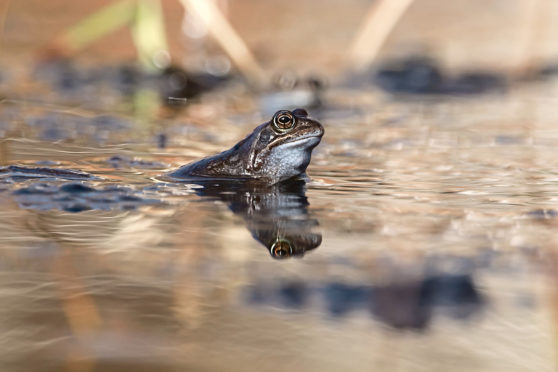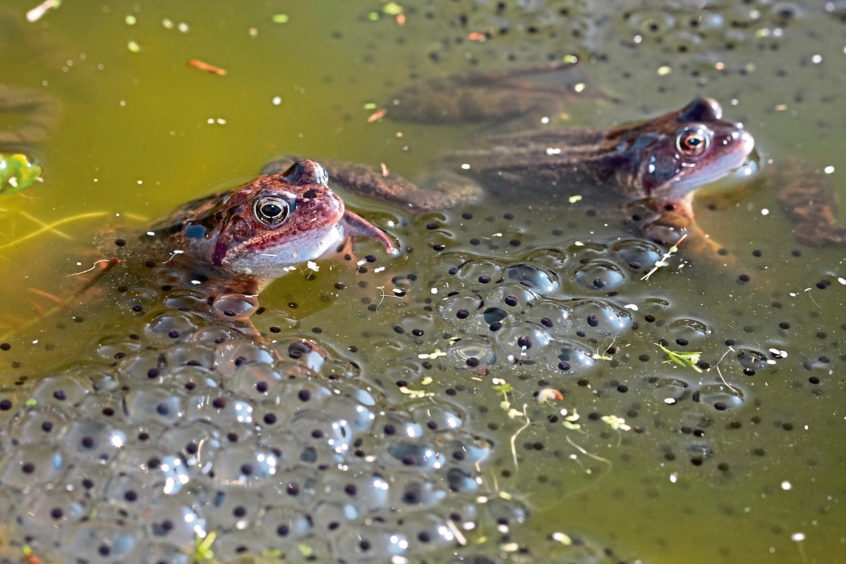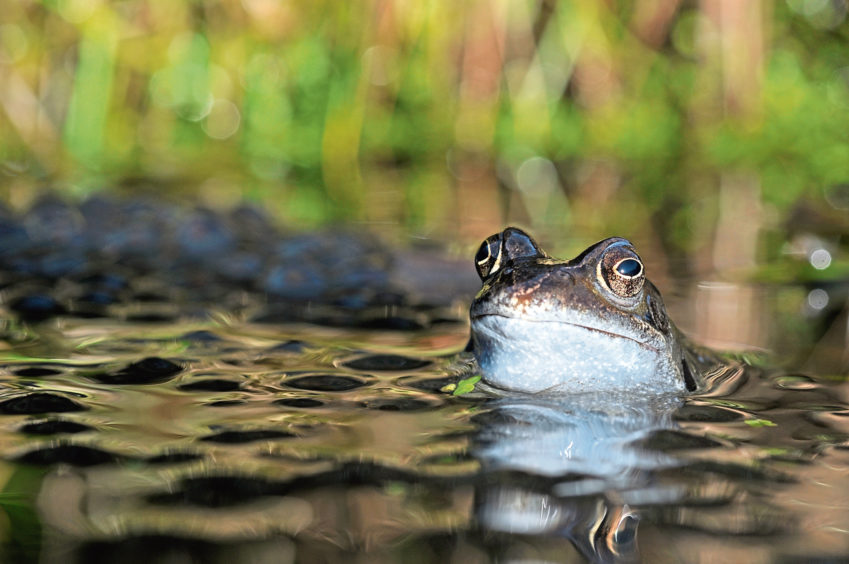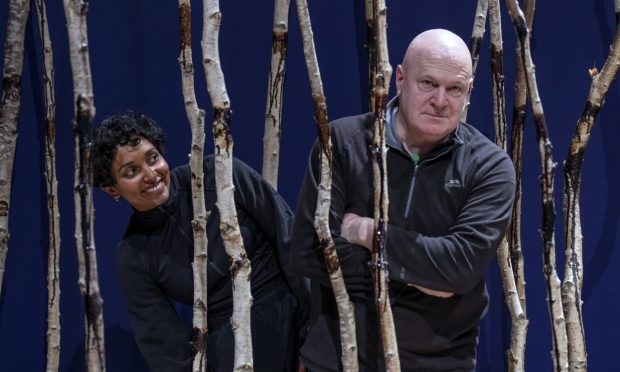Frogs have declined in recent decades because of habitat loss. Their spawn can contain up to 2000 eggs. By midsummer, the tadpoles will have turned into froglets.
A swirl in the pool by this track edge in the Ochils – frogs, and several of them, too. But they saw me first, and now they are gone, hiding somewhere on the muddy bottom.
I should have known better and approached the ditch with more caution, but truth be told, I didn’t expect to stumble upon spawning frogs so early in the season.
It seems to me that the date of spawning is getting earlier and earlier – 40 years or so ago I recall that the middle of March was the usual time to find their familiar jellified egg masses, but now it is not unusual to find frog spawn at the end of February. Such significant movement in the average spawning date is, in my view, a clear sign of our changing climate.
Once spawning is complete, the adult frogs in this ditch will disperse far and wide across the hills to spend the summer, fattening themselves up on slugs and other invertebrates. Unfortunately, life will prove a lottery for the newly emerged tadpoles, because such hill pools often dry-out before they have time to metamorphose into froglets.
There are other signs of spring about. Most mornings I hear a great-spotted woodpecker ‘drumming’ in the wood behind my house. This bird is thinking about breeding and the ‘drum’ is an effective way to advertise its presence. It is a most distinctive vibrating rattle produced by the rapid and repeated blows of its strong bill against a tree trunk or branch. The noise can carry surprisingly far, especially if the bough is hollow so as to provide extra resonance.
Some woodpigeons will be sitting on eggs now. On several occasions over the last few weeks I’ve watched these birds courting in an ash tree that overhangs our garden. The male and female pigeons sit side-by-side on a branch, with the male gently nibbling her neck. When she is ready, he quickly flutters into the air and alights on her back to mate.
Rooks, too, have been busy repairing their nests in preparation for egg laying. The cacophony of cawing is ear splitting at times, and their excitement is palpable as they wheel about just above the tree tops.
I think it is their sociability that makes rooks’ so appealing for me – they just adore being with their own kind, as well as mixing with their smaller cousin the jackdaw during autumn and winter.
Down by the river, the first emerging leaves of ramsons, or wild garlic as they are known, are poking through the ground. The leaves have a strong garlicky aroma, but it will be several weeks yet before their striking white flowers burst into bloom.
In other parts of Europe, brown bears feast upon their bulbs, which makes me wonder whether badgers also eat them. It’s a possibility, although I’ve never encountered any evidence of freshly dug bulbs and perhaps the pungent scent is not to their liking.
Info
Frogs have declined in recent decades because of habitat loss. Their spawn can contain up to 2000 eggs. By midsummer, the tadpoles will have turned into froglets.












